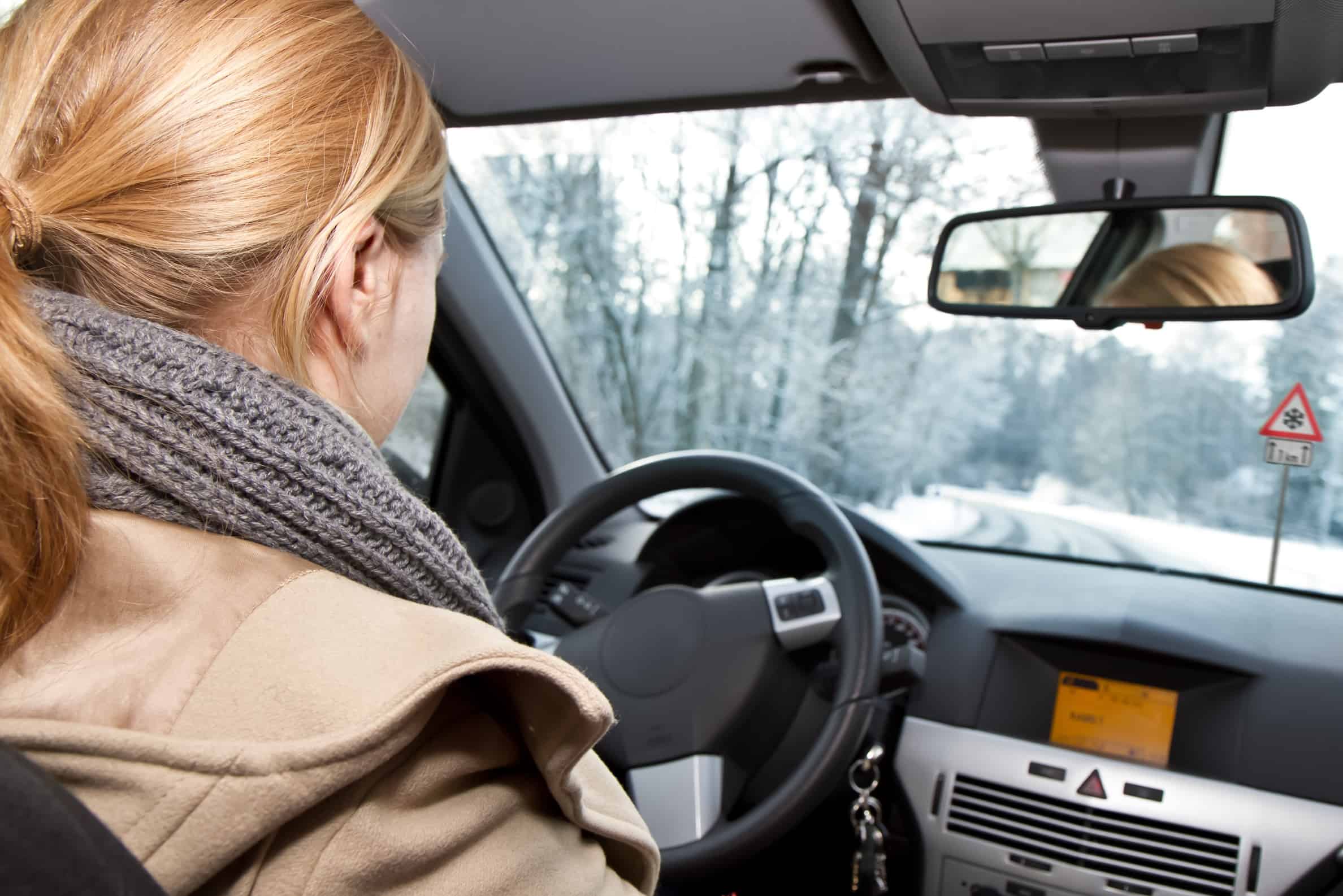Living in a nation spanning across varied terrains and stretching over 5,000 kilometres from east to west, one could say Canada is a country of drivers. We embrace the institution of the road trip with unbridled enthusiasm. Who doesn’t have memories of packing up the family vehicle, and being happily (or maybe not so happily) cramped between siblings in the backseat? For most, an open road is a siren’s call for freedom and exploration. It’s also – very simply – a way to get from Point A to Point B. We know that as final exams wrap up and universities break, as cross-border holiday sales blaze and as winter holidays approach, more Canadians will be on the road. They’ll be driving hundreds, sometimes thousands of kilometres to reunite with family or hit the slopes. No matter what the reason, we want to ensure that they arrive safely at destination. Precipitation and chilly weather present challenging winter driving conditions. Here are tips for staying safe on your road trip:
Get a Maintenance Check-Up
Well before the snow even begins to fall, all drivers should have their vehicles complete a preventative checkup. Drivers should ensure they are using the proper grade of oil for optimum performance in winter temperatures, that anti-freeze is in the radiator (not water), and check the brake line, fluid and pads. (At the very least.)
Keep a Winter Survival Kit
Just as drivers should maintain their vehicle to prevent the worst, they should also maintain a winter survival kit to prepare for the worst. A well-stocked survival kit can mean the difference between being stuck in a ditch for a few minutes or a few hour. However, in the most serious cases, it can mean the difference between life and death.
A basic winter survival kit suggested by the Canadian Auto Association includes:
- Warm winter gloves
- toque and boots
- Blanket or extra clothing
- Bag of sand or kitty litter
- Small shovel
- Ice scraper and/or snow brush
- Snacks for energy
- Extra Vehicle Fluids (brake, antifreeze, windshield wiper)
- First aid kit
- Hard copy of a local map
- Flashlight and batteries
- Flares
- Waterproof matches
- Battery jumper cables
This kit will help remedy most small accidents or breakdowns. Serious winter road trippers may also want to include properly fitting tire chains, fuel line de-icer, and traction mats.
Ensure You Have Reliable Communication

Being prepared with a critical and reliable line of communications is an important part of trip planning, especially for those with winter road travel plans in areas where cellular coverage is inconsistent or non existent. SPOT satellite devices are an affordable way to help motorists stay safe and connected independent of cellular networks. The SPOT Satellite GPS Messenger can send emergency responders your GPS coordinates so that you can easily be located in the event of an emergency and let family know you’re OK when you just want to check in. The SPOT Global Phone, powered by 100% satellite technology, allows you to make a voice call wherever your adventures take you.
Check Road Conditions Ahead of Time
The weather report may not always be reliable when conditions change rapidly. However, long distance divers will still want to know which conditions to expect. We recommend tuning into local radio stations, visiting provincial highway websites and checking twitter traffic accounts. One can also call 511, the designated road weather information line.
Invest in Winter Tires

It is important to understand the distinction between winter tires and all-season tires. They are not the same. The rubber in all-season tires starts to harden at 7°C. What does that mean? This loss of elasticity drastically limits a tire's ability to grip the road. Alternatively, winter tires will not start to harden until temperatures of -40°C and below. That’s a pretty significant difference. Before taking a road trip, it is strongly recommended to replace all-season tires with winter tires, regardless of snow accumulation.
As part of a car's regular winter maintenance checkup, winter tires should also be checked for proper pressure, balance and tire alignment for optimum performance.
Do I need studded snow tires?
Studded snow tires aid drivers on icy roads. If the terrain you will be travelling through has wet ice or hard-packed snow (versus powdery), studs are superior. This can especially be the case in locations closer to wet coastal regions where rain or slush can freeze overnight.
Slow Down, Be Alert, and Be In Control
Don't feel pressured to keep up with the speedy flow of traffic if the weather is bad. The three key rules for driving in winter weather are slow down, be alert and be in control. It takes longer to stop in winter weather conditions, and vehicles can skid and lose control easily on hard to see ice. Allow for extra space in between other cars and always have an attentive eye on the road. Staying in control also means not using cruise control, even if they roads look clear, in case of black ice.
Share Your Travel Itinerary

Before departing the house or hotel, always leave with a fully charged cell phone. Just as you would if you were hiking in remote back country, always tell someone where you are heading and around what time you expect to arrive. There are a lot of accidents that can happen along a lonely stretch of Canadian highway in the winter and it is better if someone knows to worry early.
How to: Brake with Care
Never slam on the brakes while driving on winter roads, if at all possible. Even on the well-maintained roads, emergency braking will often lead to a skid. Instead, try to swerve or employ the correct braking method for slippery roads. For those without anti-lock brakes, "pump" the brakes slowly and carefully. Do so stopping just short of locking the wheels. These small stops may be rough on the neck, but with allow for a controlled deceleration. For vehicles with anti-lock brakes, do not pump the brake pedal. Keep it firmly pressed and drivers should feel the mechanism pumping the brakes for them.
How to: Handle a Skid
When heading into a skid, it is important not to panic. Counterintuitively, the best way to handle a skid goes against every driving instinct. Instead of braking for a rear-wheel or all-wheel skid, steer into the skid. This means steering to the same direction that the back end of the vehicle is sliding towards. Do not accelerate or shift into neutral. During a front-wheel skid, straighten the wheels and accelerate slightly to shift the vehicle's weight to the rear.
Never Drive Fatigued
Winter or summer, spring or fall - a driver should never get behind the wheel when they are fatigued. Schedule a road trip with ample time to get a full night's rest before attempting long stretches. Being tired behind the wheel not only decreases reaction times, but it affects key decision-making that can cause or prevent fatal crashes.
 This Canadian winter driving safety post was was brought to you by Globalstar, distributors of SPOT Gen3, SPOT Trace and SPOT Global Phone. For peace of mind wherever your backcountry adventures take you, including beyond the cellular grid, there's never been a better time to pick up a SPOT satellite device. SPOT will keep you connected to the people and things that matters most, including emergency services, using the world's most modern satellite network. For SPOT product and pricing information visit findmespot.ca.
This Canadian winter driving safety post was was brought to you by Globalstar, distributors of SPOT Gen3, SPOT Trace and SPOT Global Phone. For peace of mind wherever your backcountry adventures take you, including beyond the cellular grid, there's never been a better time to pick up a SPOT satellite device. SPOT will keep you connected to the people and things that matters most, including emergency services, using the world's most modern satellite network. For SPOT product and pricing information visit findmespot.ca.



